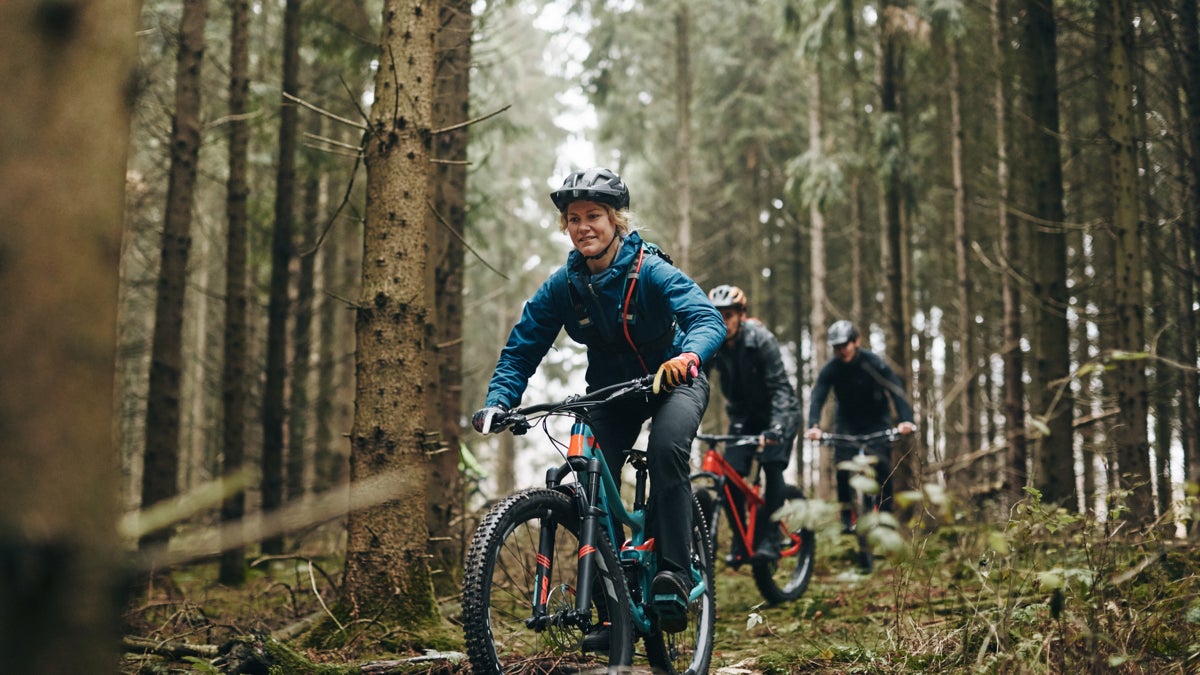No products in the cart.
Outdoor Adventure
This Is the Right Amount to Spend on a Mountain-Bike Helmet
If you want to buy a trail mountain-bike helmet these days, you’re in luck. Half-shell helmets—the most common style for mountain biking and the only type we are dissecting here—are a popular category. There are about three dozen options from ten or so brands, spanning a massive price range, and all of them must meet the same Consumer Product Safety Commission impact-testing standards. That can make choosing a helmet quite difficult.
There are several reasons to spend extra on a lid, starting with the fact that, well, it’s your head we’re talking about here. Aside from additional features (like improved ventilation) and better fit, pricier helmets have better design and construction that can—but won’t always—make them better performers in an actual crash. So if more-expensive helmets are lighter, better ventilated, and sometimes safer, how much should you spend?
Aside from cheapo lids at big-box stores, most mountain-bike helmets sold at independent bike shops start at $50 and go up to $300. For trail riding, our sweet spot—the point where you get the most performance for the dollar, and where additional gains per dollar spent start to tail off—is around $100 to $160. That’s a wide range, but as you’ll see, there’s a good reason for that.
How to Understand Safety Ratings
The primary job of a helmet is to protect you in a crash, right? Even though safety is the central goal, there’s not a lot of great information out there about how mountain-bike helmets stack up to one another. That’s partly due to how testing and certification work. The CPSC does not test helmets; instead, helmet manufacturers do their own testing (or pay a third-party lab to test them) and essentially self-certify. Also, CPSC standards are pass-fail, with no discussion of relative performance above the minimum thresholds, or compared to other models. For legal reasons, helmet makers almost never make safety claims or even talk about how far their helmets exceed testing standards, which means there are very few ways to really compare helmets for crash performance.
For higher-price adult helmets, the best source we’ve found for safety-performance testing is Virginia Tech. It is the only independent body in the U.S.A. publishing helmet-test results that reflect both linear and rotational impact forces (more on that soon) and assign overall numerical scores that allow limited comparison between models. There are other factors in buying a helmet, of course, but crash safety should be your main focus, and VT’s ratings offer the best method we’ve seen for comparing lids.
Features that Matter
Rotational-Energy Management
Every helmet listed below has a rotational-energy management system. This is a kind of “slip-plane” technology, typically a liner that sits close to your skull or between two layers of helmet foam. The most popular is from a third-party provider, MIPS (an acronym for “multidirectional impact protection system”), but some brands use proprietary systems (such as POC’s SPIN pads, or the honeycomb-like WaveCel technology exclusively licensed in Bontrager helmets).
Research suggests that traumatic brain injuries like concussions may result mostly from rotational forces that violently twist the brain inside the skull, rather than the linear impact force directed straight into whatever object you hit. Rotational-energy management systems work by letting the helmet slide and rotate slightly against your skull in the crucial milliseconds after impact, dissipating some of the forces that create that twisting or shearing stress on the brain.
These systems first came into existence about a decade ago. But no official certification standard (from either CPSC or similar protocols in other countries) measures rotational energy, so helmets are tested and certified only on how they handle conventional, linear impact forces. Still, we recommend that you buy a helmet with a rotational-energy management system. Thankfully, except for helmets purchased from mass-market retailers like department stores, it’s hard these days to find one without it.
Additional Safety Tech
Around $150, you’ll start to find helmets with roll-cage reinforcement: essentially a plastic or polycarbonate lattice inside the EPS foam that works a little like rebar reinforcement in concrete and helps hold the helmet together structurally in an impact. Some top-tier helmets also come with multidensity construction, which basically uses higher-density foam in some zones for better protection against high-energy impacts, with lower-density foam to help mitigate lesser crashes.
Fit, Comfort, and Ventilation
First, look at the fit system: typically a dial at the back that tightens the helmet around your occipital lobe. The best fit systems completely encircle the skull at the rim of the helmet, keeping your head centered; cheaper ones are anchored only halfway around and basically shove your forehead against the inside front. The cheap systems are less comfortable and may inhibit the function of rotational-energy management systems. (For folks with large heads and/or who wear larger-volume hairstyles, look for helmets whose size XL fits a head circumference greater than 60 centimeters, instead of going by the listed size.)
Ventilation isn’t simply about the number of holes in the helmet; look for deep air channels in the foam in front of and behind each vent.
Mountain-bike helmets almost always have visors; at the higher end of the sweet-spot range, their position is adjustable so you can store goggles on the helmet when you’re not riding.
Some of these helmets also have features like grippers at the back to help keep goggle straps in place, or accessory mounts for lights and action cameras. Slim webbing straps often feel nicer and less bulky on the face.
The Sweet Spot
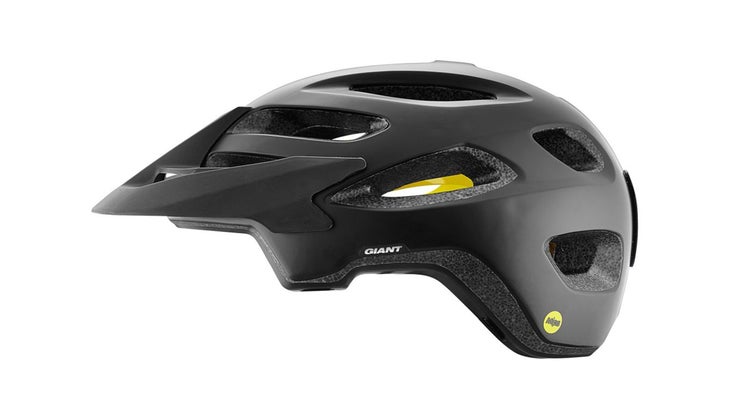
Giant Roost MIPS ($100)
Giant is best known as a bike brand, but its helmet line is serious stuff: every model tested by VT gets five stars, including the MIPS-equipped Roost (also sold as the women’s Liv Coveta). It has large, deeply channeled vents and thoughtful features like a magnetic mount pad for Giant’s Numen Link+ taillight.
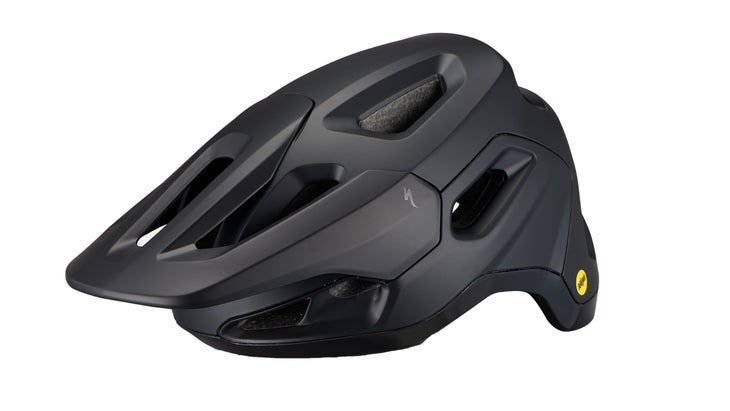
Specialized Tactic 4 MIPS ($120)
The newest iteration of the Tactic features a MIPS Evolve liner and a fit system that has six heights to fine-tune the fit. Ventilation is generous, and the notch at the top rear helps keep goggle straps in place. The Tactic also just (barely) became VT’s highest-testing helmet ever, and e-bike riders will be interested to know it passes Dutch NTA-8776 standards for Class 3 e-bikes.
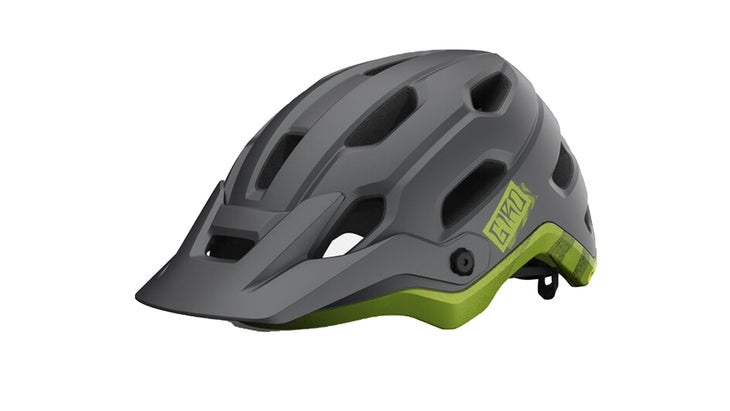
Giro Source MIPS ($130)
Giro’s newest trail helmet doesn’t have a ton of features, but it does add an adjustable visor and Giro’s excellent Roc Loc 5 fit system. It also comes in four sizes (two in the women’s colors), including an XL that fits heads up to 65 centimeters around. It does not yet have a VT rating, but similar Giro models get five-star scores.
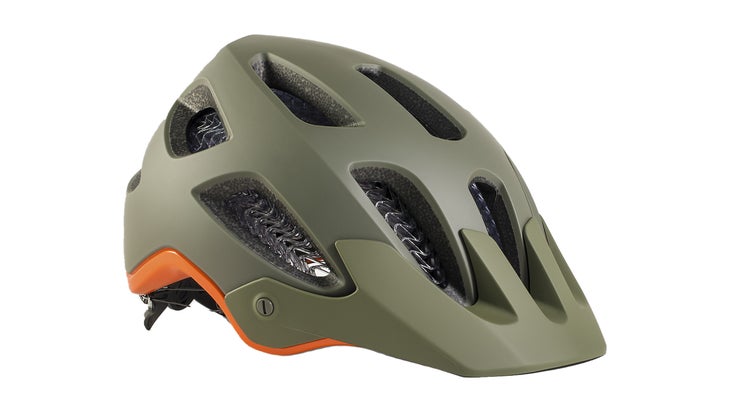
Bontrager Rally WaveCel ($160)
Bontrager has a cycling exclusive on WaveCel tech (a MIPS alternative), so you’ll find it only in Bontrager bike helmets, which uniformly test well, if similarly to top MIPS-equipped helmets. The Rally also has a fit system from Boa—which you probably know from shoes—for a comfortable, secure fit. It has an adjustable visor, it comes in four sizes (XL fits up to 66 centimeters), and Trek offers a free replacement if you crash yours in the first year of ownership.
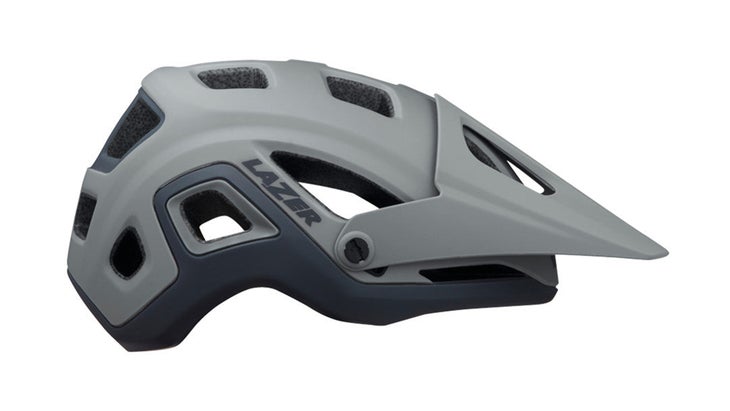
Lazer Impala MIPS ($160)
Like Giant’s, Lazer’s lids (including the Impala) generally score very well in VT’s testing. For the extra cash over the brand’s $110 Coyote, you get slightly better ventilation, a removable accessory mount, and a four-position visor with a no-slip goggle gripper at the rear.
Below the Sweet Spot
There are affordable helmets that perform as well in testing as higher-price models. What you’ll give up here is primarily fit and comfort. They have less ventilation, they’re a little heavier, and the sizing and fit systems are more spartan. But if you want to save some cash, you can’t go wrong with these two, which both have five-star VT ratings:
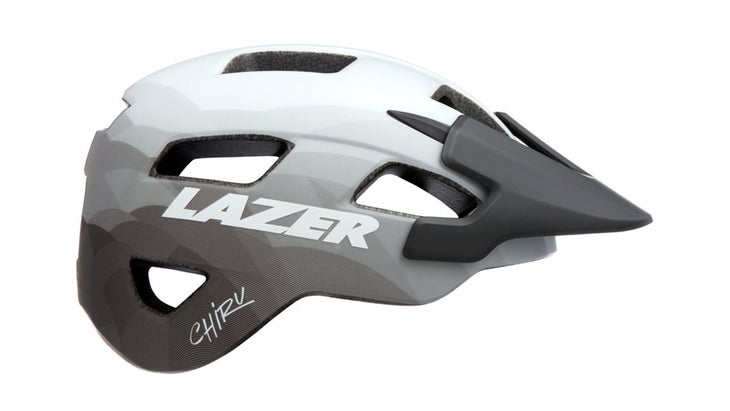
Lazer Chiru MIPS ($70)
This is a classic case of “Why spend more?” The Chiru MIPS has, well, MIPS, a 360-degree fit system (a step down from the Impala’s), generously sized vents (albeit fewer than pricier helmets), and even an optional LED taillight for riding home from the trailhead after a sunset session. It’s the best value in a trail helmet we know.
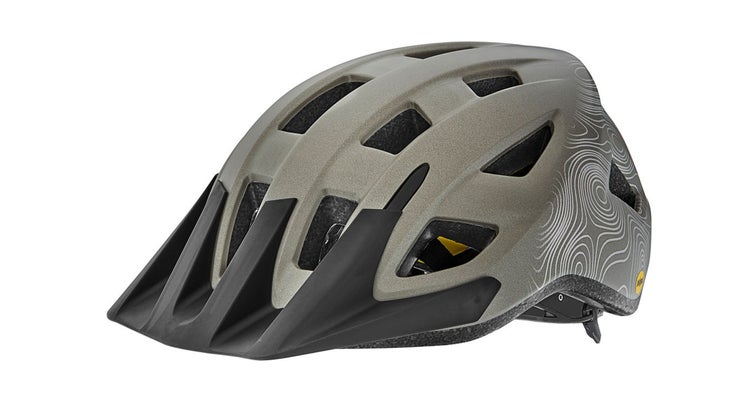
Giant/Liv Path ($55)
This affordable trail lid (offered by both Giant and its sister brand Liv, in the same model name) features a MIPS liner, a 360-degree fit system, and a choice of eight colors. Downsides: only two sizes, fewer vents, and a fixed visor.
Above the Sweet Spot
More-expensive helmets often have better ventilation, with more and larger holes and deeper channeling to promote airflow. They also have thoughtful features like accessory mounts and goggle grippers. But the biggest reason to consider spending over $160 is multidensity construction (not all of them use it, so look closely at helmet specs when researching on manufacturers’ websites). It’s a promising technology: several top-scoring helmets in VT’s database use it, and we hope to see its use expand, especially to lower prices.
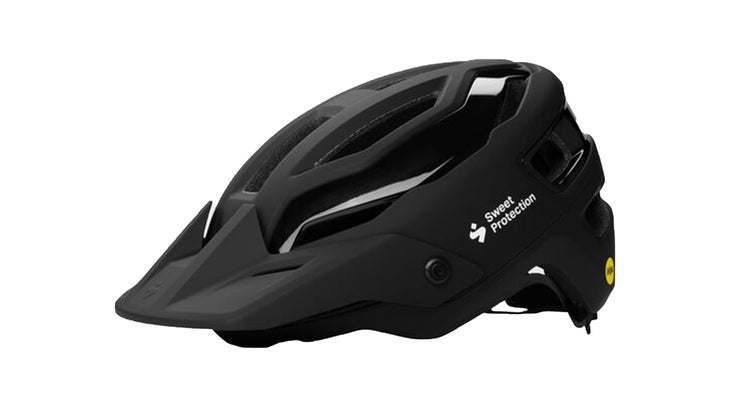
Sweet Protection Trailblazer MIPS ($180)
The now second-best-performing helmet VT has ever tested, the Trailblazer MIPS takes a twist on the zoned-protection approach: it uses a single density of EPS foam with a four-piece in-mold shell in variable-thickness polycarbonate to offer more protection in vulnerable spots.
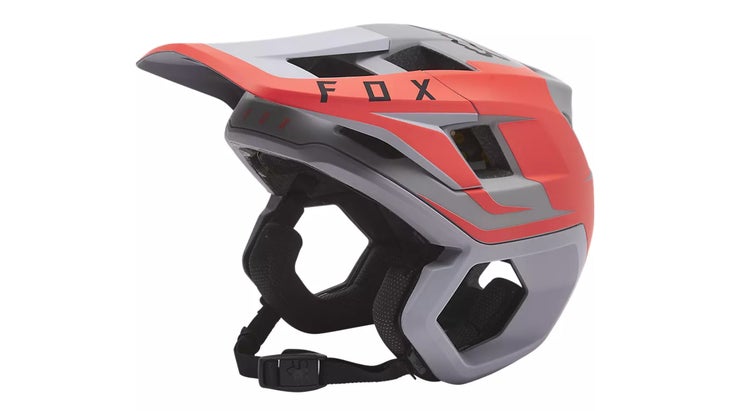
Fox Dropframe Pro ($200)
Want full coverage? The Enduro-style Dropframe Pro looks like a motorcycle helmet. It features MIPS, dual-density foam construction, and extra pads so you can fine-tune the fit. Note that its sizing is the least generous we found, at a max of 60 centimeters for the XL.
With the exception of one newer helmet that hasn’t been tested yet (the Giro Source MIPS), all of our picks get five-star ratings from VT; other, similar trail helmets from Giro regularly get excellent test scores.
Source link

